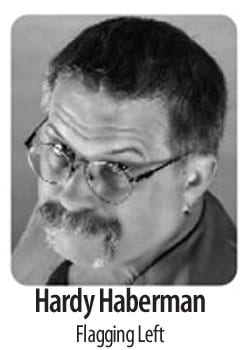Aged faces of those in All Saints memorial program offer hope that the depths of the epidemic have passed
 It’s rare that a PowerPoint presentation makes me cry. It happened last Sunday.
It’s rare that a PowerPoint presentation makes me cry. It happened last Sunday.
Every year, our church celebrates All Saints Day with a service dedicated to all the congregation and family members we lost during the past year. It is always a moving moment, even if it does remind me of the Academy Awards tribute video.
Seeing the faces and names of those people — who may not have been important to me, but certainly were to people in my church and the community — always gives me pause. It not only reminds me of the gifts these people were to our community and their families, but it confronts me with my own mortality. Death is inevitable and because of that most people, myself included, don’t like to be reminded of it.
So while trying to hold back tears when familiar faces appeared as the presentation played, and trying to stuff down those fears about death and dying that everyone gets, I noticed something strange. The pictures seemed odd.
As I watched the faces move and dissolve, one into one another, and the choir sang a moving song, I was struck by how odd the faces looked: These people had grey hair, weathered faces, drooping eyes — all the signs of old age!
To people who are not part of the LGBT community, or those born after 1985, this might seem perfectly normal. But to me, a gay man who lived through the darkest depths of the HIV/AIDS epidemic years, it was odd.
As little as 15 years ago, most of the faces of those we were mourning would have been young. They would have been mostly men, smiling and in the prime of their lives, or sometimes forcing a grin through the weakness and pain.
They would have been men whose names were almost all familiar to me.
Yet today, here were gay men and lesbians who, in some cases, I watched grow old and fall prey to the kinds of illnesses that affect an aging population — people whose lives had been lived fully, who reached a point where their demise was not surprising, but the natural order of things.
So why do I bring up this morose subject? Because it actually is something I find encouraging.
It lifts my spirits to see people whose lives were full and rich and long. It makes me feel happy to have known so many of them for years, and to have been part of their lives and families.
With only a couple of exceptions, I did not see any faces that were young or even middle aged. I think that is a sign of something greater happening, the reality of an epidemic that may be coming to a close.
To not have to sit through a parade of images that elicit the words, “He was so young” and, “Gone too soon” gives me hope — hope that the next generation of LGBT youth will never have to experience that shock of seeing someone who you had lost track of, and suddenly they were gone. Youth who will never have the experience of hearing the name of a lover or a close friend read in a wavering voice and added to a list of those that fell ill and wasted away, who do not to have to attend a funeral every couple of weeks or sew those tear-stained panels for the NAMES Quilt.
The advancements in treatment for HIV are astounding, and though much marketing hoopla is made of HIV being a “manageable disease,” I was loath to consider it so. My experience with AIDS has been straightforward and fatal.
But I now believe that future generations will find that hard to understand, and that also gives me hope.
I say all this not to trivialize the passing of anyone, nor to wallow in the maudlin nostalgia that can be so tempting when you have lived through the kinds of trauma LGBT people of my generation did.
I say all this as something uplifting that can come of this changing demographic. LGBT people are growing old! Some of us never thought we would, and that makes the All Saints Day PowerPoint memorial a testament to resilience and the future.
“Therefore, since we are surrounded by such a great cloud of witnesses, let us throw off everything that hinders and the sin that so easily entangles, and let us run with perseverance the race marked out for us.” Hebrews 12:1
This article appeared in the Dallas Voice print edition November 7, 2014.

